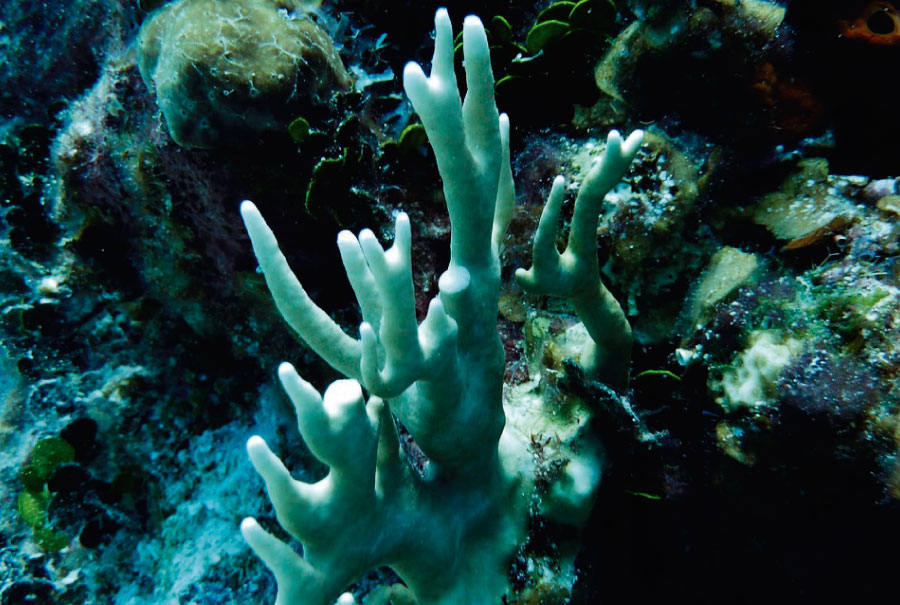NEWS

Almost 10 years ago, in a 2011 expedition, the NGO Oceana discovered the cold-water coral reef in the Cabliers Bank, in the Alboran Sea, in waters shared by Morocco, Algeria and Spain, at depths of 300-400 meters. This coral reef is the only one in the Mediterranean known to continue growing, measuring approximately 25 kilometers.
Researches have demonstrated that 50,000 square meters are alive, and that mounds formed by the white coral skeletons for thousands of years are 100 meters high and shelter a wide variety of marine fauna.
“A unique spot in the Mediterranean,” describes Pilar Marín, a marine scientist from the preservation organization, who advocates for its protection together with other 14 essential enclaves for the preservation of marine biodiversity in European waters.
Coral reef
“It is like an oasis deep in the sea, which has been kept pristine and untouched by man,” describes Claudio Lo Iacono, marine geologist from the Institute of Marine Sciences of the CSIC and an expert in underwater enclaves.
Among some of the treasures in this amazing ecosystem, researches have found a coral, three meters wide, of the Lophelia pertusa species. “A beast growing for hundreds of years,” describes La Iacono. The area has been free of any human intrusion, as bottom trawling looks for more leveled sea bottoms, and the area is too far from the Moroccan coast for longline fishing (which uses baited hooks), and trips back and forth are not profitable.
In addition, the high vessel traffic at the Alboran Sea –almost 20% of the world’s traffic– has not significantly affected the reef, as there is more traffic to the north, “near Cabo de Gata,” as explained by the scientist. Its cleanliness is such that, after several days of immersions using an underwater robot, “no trace of human activity, plastic, or parts of nets or fishing lines” was found.
The corals of the Mediterranean
Deep-water corals abound in the Mediterranean, but not in reefs of the size and richness of Cabliers. “They are delicate systems similar to tropical systems, except in that they do not live in symbiosis with seaweeds, but take advantage of the nutrients from sea currents,” Lo Iacono explains.
Commercial fish species, such as blackspot seabream, European conger, sole, and red scorpionfish, shelter, feed and breed within these structures. “There are areas that serve as nurseries due to the large number of juvenile fish, which proves that coral reefs are beneficial for biodiversity and, if harmed, species caught will be affected, which would be detrimental to the economy. It is a cycle.”
These formations are also black boxes where climate information from the past is stored. “This information is highly valuable because it allows us to understand what has happened in the past in order to project future scenarios and thus predict the response of corals to current climate change,” Lo Iacono adds.
The scientist arrives to these conclusions in a study conducted with biologist Guillem Corebra, published last year in the scientific journal Progress in Oceanography. He is currently working on two European projects to study coral reefs in Canada, Blanes canyon, and again in Cabliers.
Peace by pure chance
However, this peace enjoyed by the coral reefs, which allows them to continue growing, is by pure chance. “Other fishing grounds may be exhausted and longline fishermen may want to go further and reach the reef, or trawl fleets passing nearby to the Atlantic ocean may decide to fish on their way,” scientists illustrate.
In addition, as the Cabliers coral reef has not been exploited yet, its declaration as a restricted fishing area would not cause any serious economic harm to any fishing company.
In order to achieve the protection of this and other marine spots selected by Oceana at the Baltic Sea, North Sea, southeast of the Atlantic Ocean, and the Mediterranean Sea, conclusions will be submitted in the report “Unprotected Marine Treasures: An Oceana proposal to protect 15 marine biodiversity hotspots in Europe” to the governments of the countries concerned. Furthermore, conclusions will be taken to international agreements signed by the European Union.
The goal is to safeguard these living environments for the preservation of biodiversity against overfishing, abandoned nets, invading species, sea traffic, sand extraction, and ocean noise.
In Spain, the risk areas selected by the NGO Oceana are located in the Atlantic coast of Galicia, the waters of Doñana National Park, the seamounts of the Canary Islands and the Mediterranean Sea: the seamounts of the Mallorca Channel, and Cabliers and Palos mounds.
Source: ESTHER SÁNCHEZ / EL PAÍS,